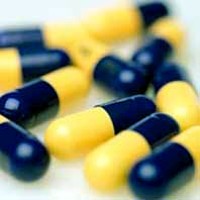An initiative led by pharmacists, using information technology was found to reduce more prescription errors by general practitioners than simple automated feedback among patients at risk for these errors. The findings by a team led by University of Nottingham medical professor Tony Avery, himself a practicing G.P. , appear online in the journal The Lancet (free registration required).
The clinical study involved patients at 72 practices in Nottingham and Manchester in the U.K. taking drugs commonly associated with prescription errors. The drugs included prescriptions of angiotensin-converting-enzyme (ACE) inhibitors and diuretics to patients age 75 or older, non-steroidal anti-inflammatory drugs to patients with a history of peptic ulcer, and beta-blockers to patients with asthma. Many primary care practices in the U.K. have in-house pharmacies.
The practices were randomly assigned to receive a combination of computerized feedback with support from a pharmacist to correct any errors detected, or only computerized feedback on patients at risk (the control group). The control group receiving only the computerized feedback also received brief written messages about the importance of each type of error.
In the test group of practices receiving the pharmacist interventions, G.P.s met with pharmacists at the beginning of intervention period to discuss the problems identified from the computerized feedback and to agree on an action plan. The pharmacist then spent roughly two days a week for the next 12 weeks dealing with the problems and working to improve safety systems. In some cases, patients received a review of their prescriptions with the pharmacists or were asked to have a blood test to correct medication errors.
After six months, the results showed G.P.s made fewer medication errors with the combination pharmacist/I.T. interventions than with the computerized feedback alone. The findings show G.P.s were almost 50 per cent less likely to make errors in the monitoring of older people taking ACE inhibitors or diuretics. The results also indicate G.P.s were 42 per cent less likely to make errors in prescribing non-steroidal anti-inflammatory drugs to patients with a history of peptic ulcer (including stomach ulcer). And G.P.s were 27 per cent less likely to make errors in prescribing beta-blockers to patients with asthma.
The study also included an incremental cost analysis that showed the additional cost for the pharmacist/IT approach came to about £75 ($119.00) per error, a small price compared to the human and financial cost of a prescription error. “Our study has shown remarkable reductions in prescribing errors,” says Avery, “from an approach that could easily be rolled out to general practices in England and the rest of the U.K.”
Read more: Computerized Outpatient Prescriptions Still Have Errors
* * *


 RSS - Posts
RSS - Posts
[…] Pharmacist/Tech Initiative Found to Cut Medication Errors […]